
K MOD Crown Copyright 2021
Did Truss authorise ‘war risk’ provocation over Black Sea?
A UK Boeing RC-135W Rivet Joint spy plane was ordered to approach Russian territory in a Cold-War-style provocation just days after Liz Truss’s mini-budget collapsed
British government sources have refused to say if Liz Truss personally gave orders to RAF high-tech spy planes to fly at high speed over the Black Sea and head directly toward Russian defence forces near Sochi. But they have admitted to the risks they created – and that, on 29 September, a Russian Air Force Sukhoi interceptor launched a missile to push the spy probe away.
“Any escalation with someone like Putin is very dangerous because of the way he could react,” warned Paul Rogers, professor of peace studies at Bradford University. “He has to be handled with great caution as he is highly unpredictable and has immediate access to nuclear weapons,” he told Computer Weekly.
The Russian “warning shot” was fired after a third successive occasion when a British spy plane, registration ZZ664, flew far to the east of normal areas used to collect information to help Ukraine. On 29 September, flying south of Crimea and the Kerch Strait, ZZ664 continued towards the Russian coast. After the warning shot, the RAF retreated east and stayed safely over Nato-protected territory – until Tuesday 18 October, just as the now former Prime Minister again faced controversy.
The spy plane involved in the Black Sea incident is one of three Boeing RC-135W Rivet Joint platforms procured 10 years ago at a total cost of over £1bn. They are the largest, heaviest and most sophisticated electronic intelligence aircraft currently in use. Most are operated by the US Air Force.
The Rivet Joint’s largest electromagnetic signal collection and surveillance systems are two large flat phased array high-gain steerable beam antennae mounted on either side of its fuselage, comprising thousands of individual receiving antennae. Tons of sophisticated digital signal processing units then identify and locate all detected radio signals, and plot, decode and record them into onboard data storage.
Rivet Joint’s 360-degree search, acquisition and high-frequency direction finding (HDF) systems perform “search, classification, collection and DF of all militarily significant signals”, according to the Federation of American Scientists. Data can be sent immediately on the military Global Broadcast Service (GBS) using wideband satellite and terrestrial line-of-sight links.
“We hoover everything up,” a former US RC-135 mission manager told Computer Weekly. “It’s a flying vacuum cleaner – we take every frequency, every angle we see.”
Although the mission crew of about 10 systems operators maintain watch and focus during the flights, their main mission is to bring back bulk collected data on Russian military signals to their Lincolnshire base, RAF Waddington.
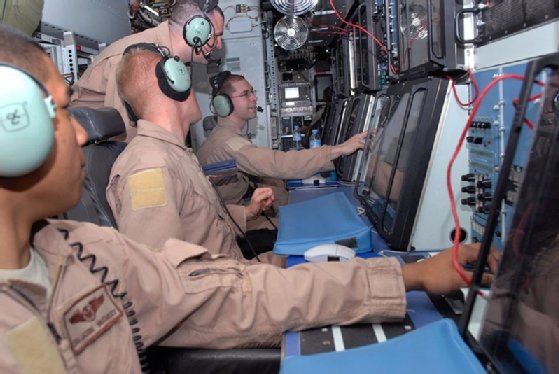
As soon as the aircraft lands, data racks are removed and transferred to a computer processing building at Waddington to extract a full picture of everything seen. The data is then put on the top secret Five Eyes signals intelligence network, and shared to centres including GCHQ, the US National Security Agency, and military support centres including in Cambridgeshire, Yorkshire and Lincolnshire.
In the modern digital era, unlike in the Cold War, spy planes are difficult to hide. In common with civil airliners, Rivet Joints broadcast continuous position, height and speed information to air traffic controllers using a radio data system called ADS-B. ADS-B signals are also collected, shared and stored by multiple worldwide networks of enthusiasts and by commercial sites such as Flightradar24.
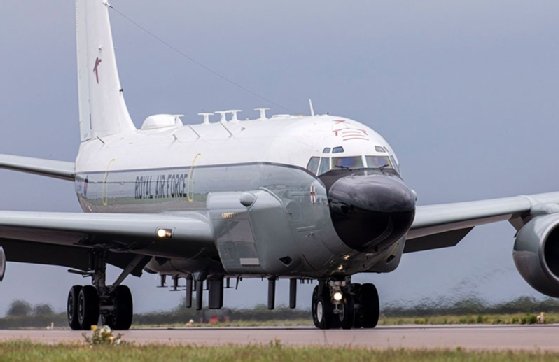
The result is that almost any time an aircraft like ZZ664 is in the air, internet users can log in and view where the aircraft is and where it has been. The most recent reconnaissance flights of ZZ664 can be viewed on the site. (A subscription or trial is required to view the 29 September track.)
Defence secretary Ben Wallace described to the House of Commons on 20 October how, three weeks previously, Rivet Joint flight RRR7215 was “interacted with by two Russian armed SU-27 fighter aircraft … one of the SU-27 aircraft released a missile in the vicinity of the RAF Rivet Joint beyond visual range”.
Wallace failed to tell MPs the intercepted 10-hour flight by the £350m spy plane had been the third in an unusual and unprecedented series of operations by the same aircraft. The first extended-range flight flew on 26 September. Two days later, a second flight made two approaches to Sochi, the second going closer than the first. The next day, the Russian fighters took action forcing the plane back.
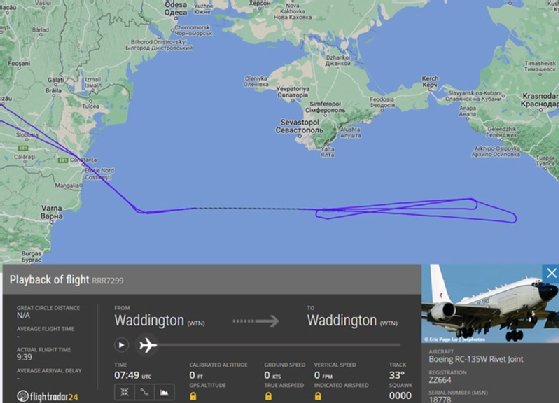
The clash with Russian fighters is “a reminder of quite how dangerous things can be when you choose to use your fighters in the manner that the Russians have done”, Wallace added, while failing to acknowledge that they were reacting to British provocation.
He said he had written to Russian defence minister Sergei Shoigu to claim that the British aircraft “was unarmed, in international airspace, and following a pre-notified flight path”. The Russian minister confirmed what had happened and described the air-to-air missile launch as “a technical malfunction of the SU-27 fighter”.
Throughout the Ukraine war, and prior to Truss taking over at Downing Street, RAF flights over the Black Sea had never flown further than due south of Crimea, at 34.6 degrees east (shown). Even this has been more provocative than the actions of any other Nato country. US Air Force Rivet Joints stationed in Britain at RAF Mildenhall also monitor communications daily around Ukraine’s borders – but stay over Romanian airspace.
US Navy spy planes and airborne warning and control system (AWACS) radar trackers, as well as other types from Romania, Sweden and other allies, also routinely surveil the conflict – but always from the safety of Nato territory or waters. The sole exception has been unmanned US Air Force RQ-4 Global Hawk long-range unmanned aerial vehicles (UAVs). Taking off from Crete, Global Hawks can be spotted almost every day, almost all day, flying seemingly endless “racetrack” circuits at a height of 55,000ft, south of Crimea – but never nearer Russia than 34 degrees east.
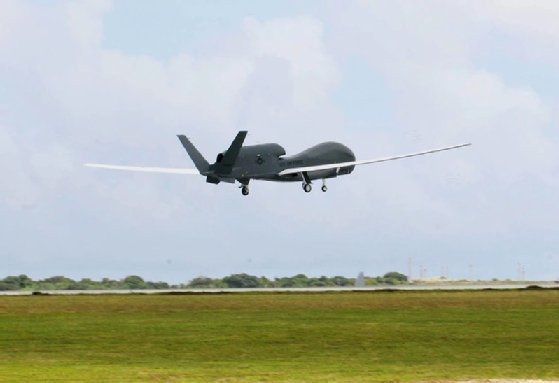
Until Truss came under pressure after the collapse of her 23 September mini budget, the RAF had stayed near Crimea. But on 26 September, ZZ664 was ordered to fly due west at 35,000ft and 550 miles per hour, heading for the Krasnodar coast. The aircraft did not turn until 50 miles from the Russian coast, at 38.5 east. Had it not turned, it would have entered Russian airspace in two minutes and doubtless would have been shot down.
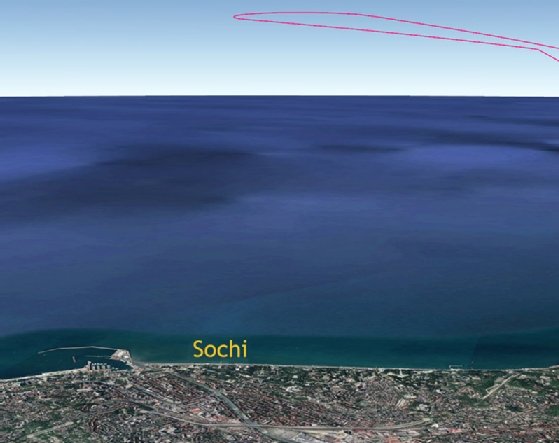
Ordering of these missions by the Truss government “echoes some of the most dangerous aspects of deliberate provocations by both sides during the Cold War”, according to Rogers. The results of historic clashes have been deadly, notably because RC-135s have the same airframe and similar outlines to veteran Boeing 707s.
On 1 September 2003, Soviet fighters shot down Korean Air flight KAL007 from New York over the Sea of Japan, killing 269 people, after the airliner had gone off course and was mistaken for an RC-135. In 1969, North Korea shot down a similar US spy plane, a Navy Orion, killing 31. In 2001, Chinese fighters came too close while intercepting another US Navy EP-3E Orion, causing a collision that killed the Chinese pilot and forced the Orion to make an emergency landing at a Chinese Air Force base on Hainan. US Naval Orions are still in use and actively involved in surveillance of the Ukraine war – but only from Romania.
A major risk of global war comes from “accidents, incidents and mavericks (AIM)”, according to current military doctrines. “They all risk upward escalation. We don’t know what the Russians are seeing and thinking,” said Rogers. “That can turn a crisis into something much worse.” We now know that the last time the world blindly came to the brink of nuclear war was in 1983, when Soviet intelligence mistook a large-scale NATO exercise to be the start of a real attack. “We were lucky then as Nato stopped the exercise in enough time.”
Radar track records show that one week after the Russian defence minister confirmed that a missile had been launched “accidentally, and in the middle of their UK domestic political crisis, Truss’s government sent the RAF back – this time with armed fighter escorts. At 8.15am on Tuesday 18 October, Rivet Joint flight RRR7218 left Waddington to start overflying the Black Sea again. As it crossed Europe, an RAF tanker and two Typhoon fighters flew from Cyprus to join the mission at Constanta, the Romanian Black Sea port. The costly mission, clearly considered dangerous by the RAF, required a massive Stratotanker refuelling aircraft to circuit over Constanta for hours to keep the fuel-hungry fighters in the air.
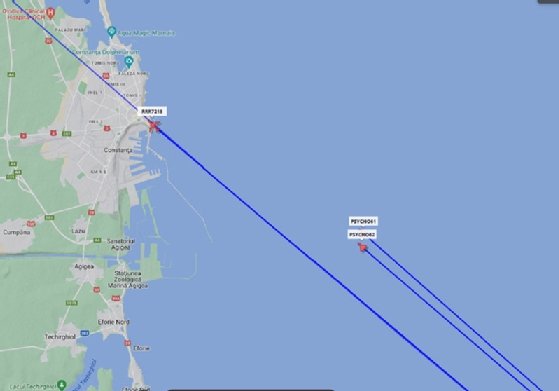
Speaking on Thursday, Rogers pointed out that Britain’s exceptional military conduct within Nato could risk encouraging Putin to “retaliate in kind” – perhaps sending similar missions against Nato’s Baltic states, or against Britain itself. He fears that UK politicians will wish to continue to escalate to distract from domestic difficulties. In a percipient article written before Truss resigned, he predicted that “in the coming weeks and months, whichever Conservative politician winds up in Downing Street, there will be plenty of banging of the drums of war”.
A Ministry of Defence spokesperson told Computer Weekly they had “nothing to add” to the defence secretary’s statement. The question of who ordered the flights remains unanswered.
The unanswered questions about UK’s Black Sea missions
Computer Weekly put the following questions to Downing Street and the Ministry of Defence.
Downing Street:
- Did the Prime Minister, Liz Truss, authorise the reconnaissance flights by Rivet Joint aircraft to the Black Sea on 26, 28, 29 September 2022?
- Was the Prime Minister, Liz Truss, requested to authorise these reconnaissance flights in Question 1 by the defence secretary?
- Did the Prime Minister, Liz Truss, authorise the reconnaissance flights by Rivet Joint aircraft to the Black Sea on 8 and 9 October 2022?
- Was the Prime Minister, Liz Truss, requested to authorise these reconnaissance flights in Question 3 by the Defence Secretary?
Downing Street response:
Downing Street referred Computer Weekly to defence secretary Ben Wallace’s statement. A spokesperson said: “We wouldn’t comment further for security reasons.” Downing Street said any further questions should be addressed to the Ministry of Defence.
Ministry of Defence:
- Did the defence secretary, Ben Wallace, authorise the reconnaissance flights by Rivet Joint aircraft over the Black Sea on 26, 28, 29 September 2022?
- Did the defence secretary, Ben Wallace, authorise the reconnaissance flights by Rivet Joint aircraft over the Black Sea on 8 and 9 October 2022?
Ministry of Defence response:
The MOD referred Computer Weekly to the defence secretary Ben Wallace’s statement. A spokesman said the MOD would not normally comment on details about operations.
Correction: The UK ordered additional reconaissance flights by Rivet Joint aircraft on 18 October and 21 October 2022, not 8 October and 9 October 2022 as reported above.









